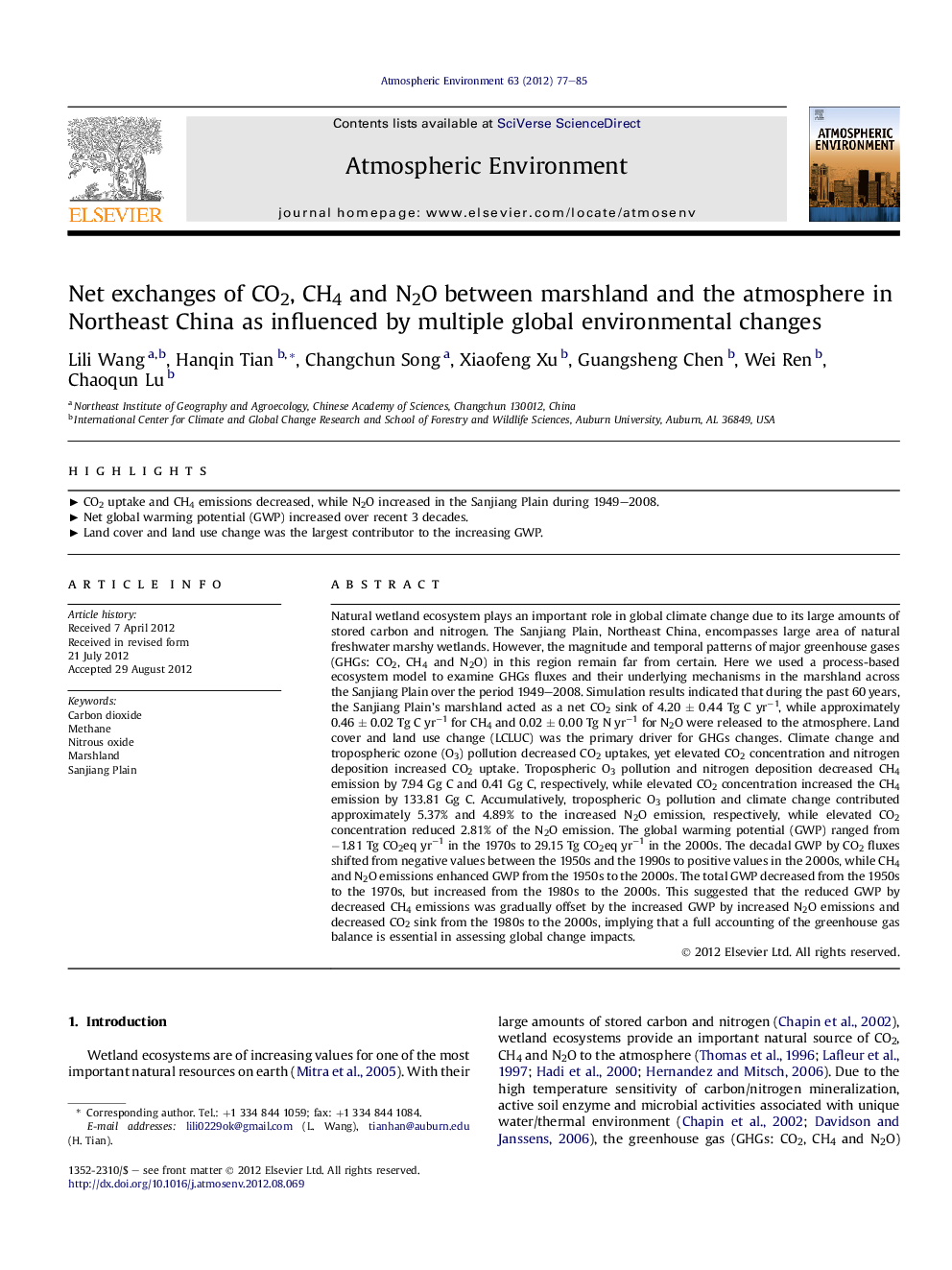| کد مقاله | کد نشریه | سال انتشار | مقاله انگلیسی | نسخه تمام متن |
|---|---|---|---|---|
| 4438599 | 1620408 | 2012 | 9 صفحه PDF | دانلود رایگان |

Natural wetland ecosystem plays an important role in global climate change due to its large amounts of stored carbon and nitrogen. The Sanjiang Plain, Northeast China, encompasses large area of natural freshwater marshy wetlands. However, the magnitude and temporal patterns of major greenhouse gases (GHGs: CO2, CH4 and N2O) in this region remain far from certain. Here we used a process-based ecosystem model to examine GHGs fluxes and their underlying mechanisms in the marshland across the Sanjiang Plain over the period 1949–2008. Simulation results indicated that during the past 60 years, the Sanjiang Plain's marshland acted as a net CO2 sink of 4.20 ± 0.44 Tg C yr−1, while approximately 0.46 ± 0.02 Tg C yr−1 for CH4 and 0.02 ± 0.00 Tg N yr−1 for N2O were released to the atmosphere. Land cover and land use change (LCLUC) was the primary driver for GHGs changes. Climate change and tropospheric ozone (O3) pollution decreased CO2 uptakes, yet elevated CO2 concentration and nitrogen deposition increased CO2 uptake. Tropospheric O3 pollution and nitrogen deposition decreased CH4 emission by 7.94 Gg C and 0.41 Gg C, respectively, while elevated CO2 concentration increased the CH4 emission by 133.81 Gg C. Accumulatively, tropospheric O3 pollution and climate change contributed approximately 5.37% and 4.89% to the increased N2O emission, respectively, while elevated CO2 concentration reduced 2.81% of the N2O emission. The global warming potential (GWP) ranged from −1.81 Tg CO2eq yr−1 in the 1970s to 29.15 Tg CO2eq yr−1 in the 2000s. The decadal GWP by CO2 fluxes shifted from negative values between the 1950s and the 1990s to positive values in the 2000s, while CH4 and N2O emissions enhanced GWP from the 1950s to the 2000s. The total GWP decreased from the 1950s to the 1970s, but increased from the 1980s to the 2000s. This suggested that the reduced GWP by decreased CH4 emissions was gradually offset by the increased GWP by increased N2O emissions and decreased CO2 sink from the 1980s to the 2000s, implying that a full accounting of the greenhouse gas balance is essential in assessing global change impacts.
► CO2 uptake and CH4 emissions decreased, while N2O increased in the Sanjiang Plain during 1949–2008.
► Net global warming potential (GWP) increased over recent 3 decades.
► Land cover and land use change was the largest contributor to the increasing GWP.
Journal: Atmospheric Environment - Volume 63, December 2012, Pages 77–85